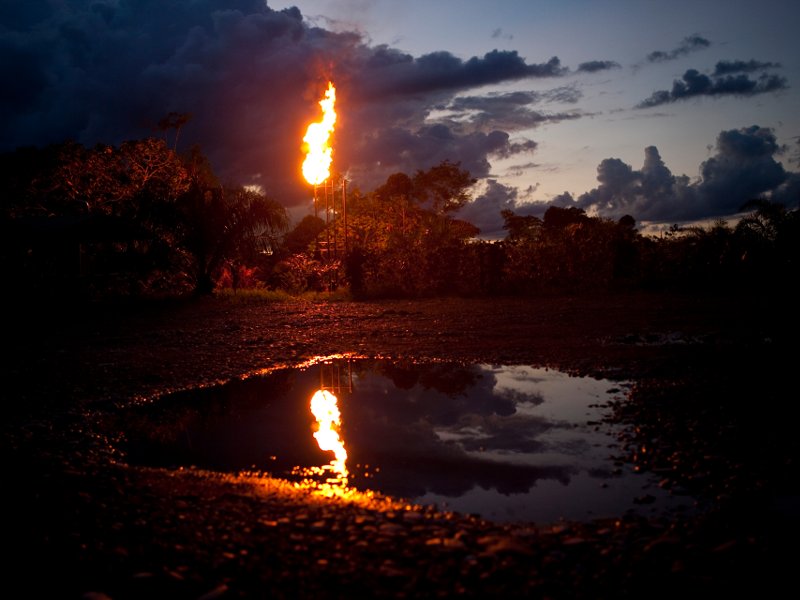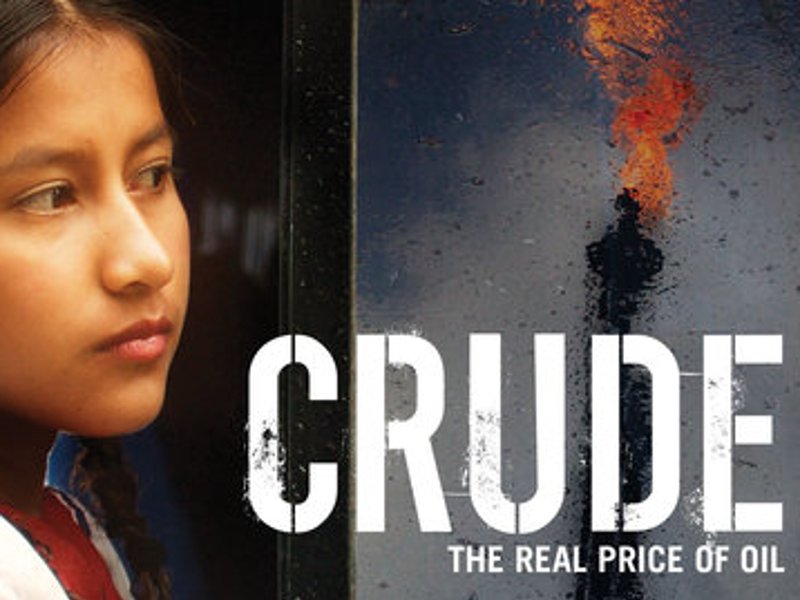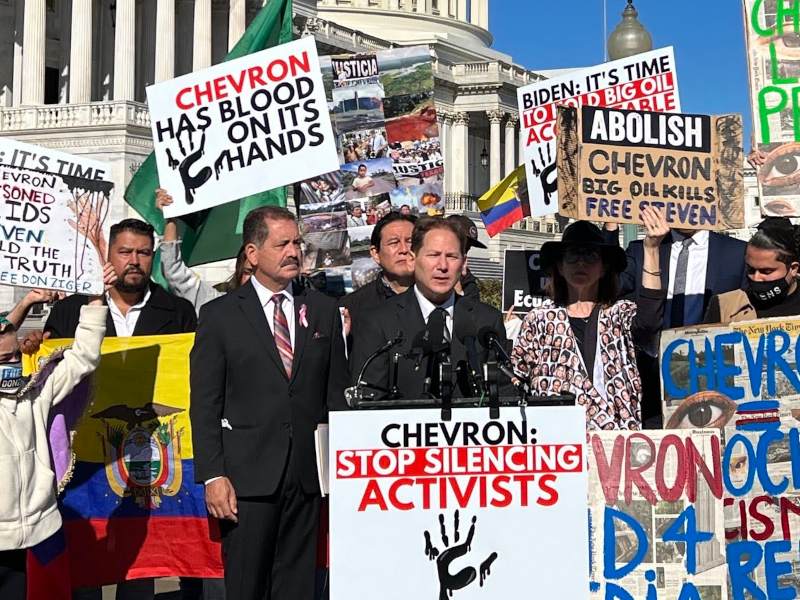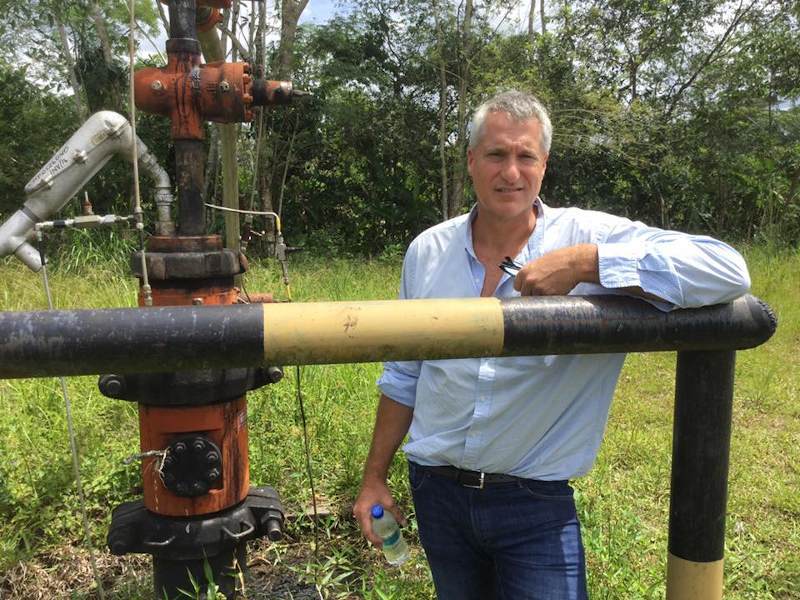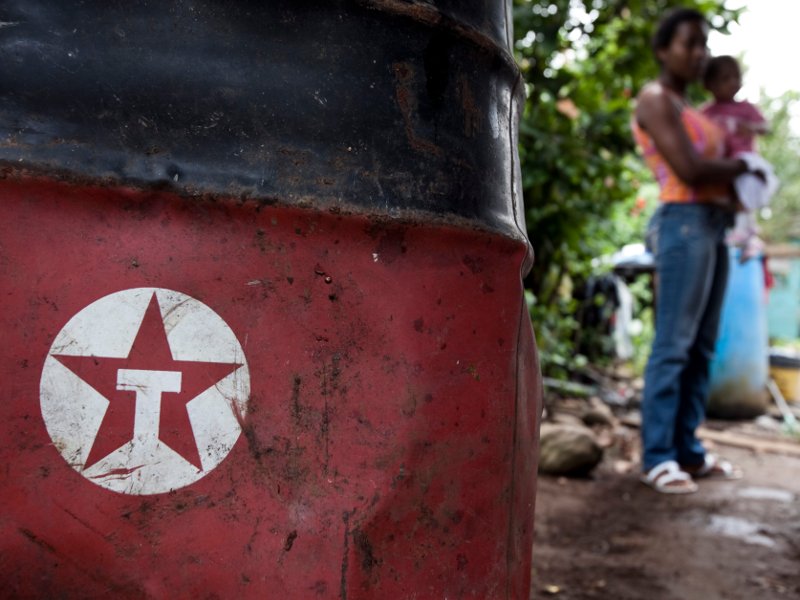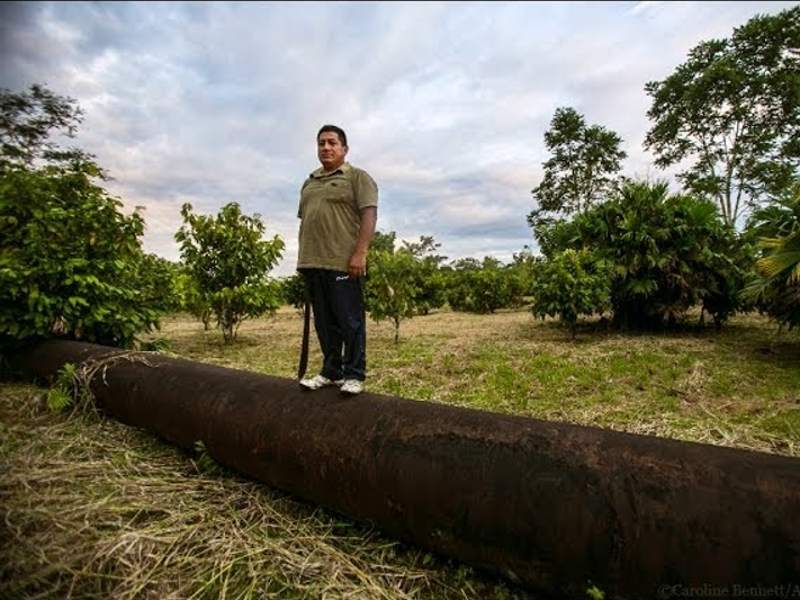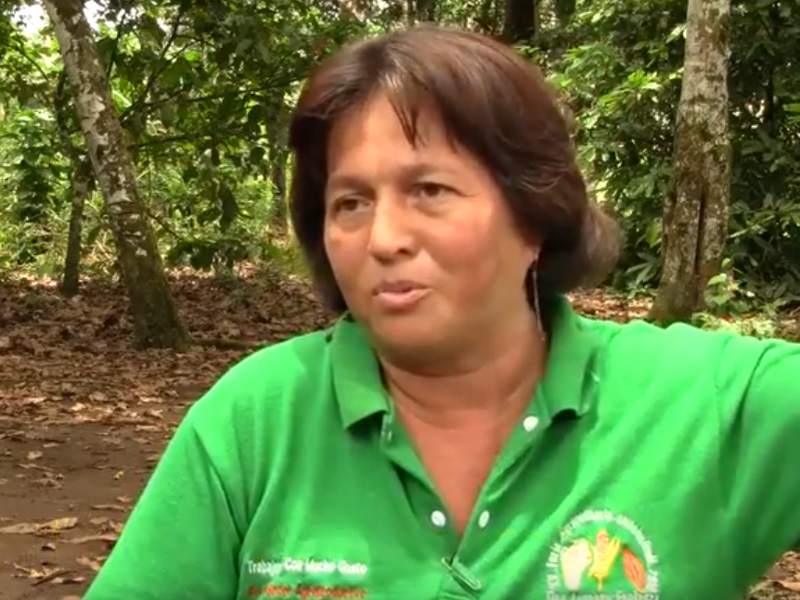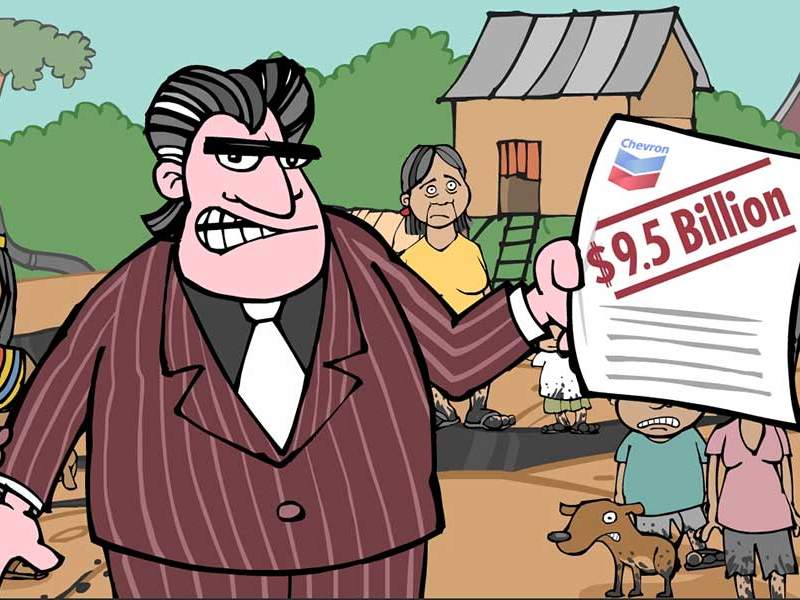

A Rainforest Chernobyl
For over three decades, Chevron chose profit over people.
While drilling in the Ecuadorian Amazon from 1964 to 1990, Texaco – which merged with Chevron in 2001 – deliberately dumped more than 16 billion gallons of toxic wastewater, spilled roughly 17 million gallons of crude oil, and left hazardous waste in hundreds of open pits dug out of the forest floor. To save money – about $3 per barrel – the company chose to use environmental practices that were obsolete, did not meet industry standards, and were illegal in Ecuador and the United States.
The result was, and continues to be, one of the worst environmental disasters on the planet. Contamination of soil, groundwater, and surface streams has caused local indigenous and campesino people to suffer a wave of mouth, stomach, and uterine cancer as well as birth defects and spontaneous miscarriages. Chevron has never cleaned up the mess it inherited, and its oil wastes continue to poison the rainforest ecosystem.
Today, Chevron is a corporate criminal on the run. It has been found liable by Ecuadorian courts and ordered to pay $9.5 billion. The company is now running from an international legal dragnet to force the company to pay for the vast task of cleanup and remediation of the Ecuadorian Amazon. The Ecuadorians have filed a lawsuit in Canada to seek seizure of Chevron's assets for this purpose.
